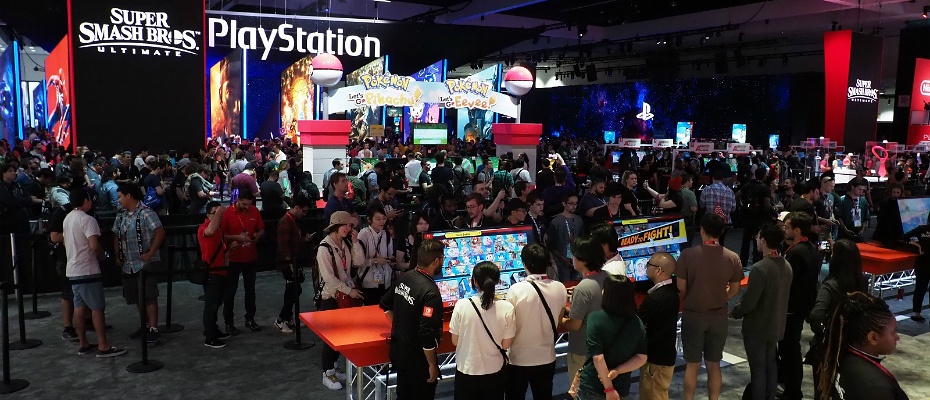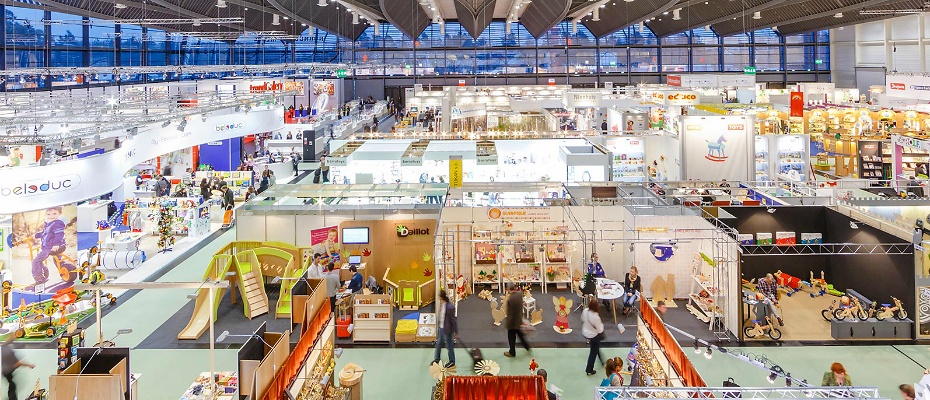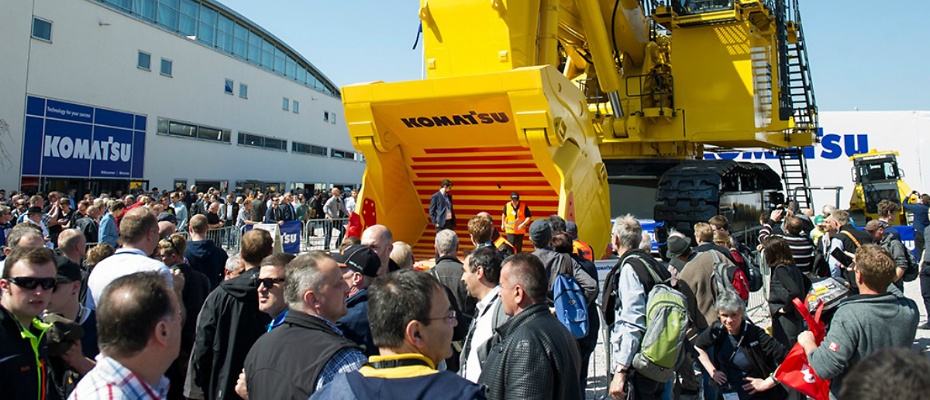
There are hundreds of thousands of different trade fairs, conventions and expos happening all around the world that cover practically every subject under the sun, from energy conductors to Japanese animated shows and comics. These events range dramatically in size, from small gatherings of a few hundred specialists to massive events hosting more than 500,000 visitors. It’s precisely these large events, which often attract the interest of the public, with the biggest ones usually gathering the eyes of millions of followers at home.
But recently, the big trade fairs have faced a considerable amount of criticism from both individuals and companies. Certain major exhibitors don’t feel like their products receive enough attention when they share the spotlight with thousands of others – for example, Sony’s PlayStation famously pulled out of E3 2019, the largest gaming convention in the world, in favour of showcasing their products at their own trade show, PSX, in December of that year. Meanwhile, visitors have complained that the larger events detract focus from the smaller ones, which suffer from even lower attendance and exhibitor presence, as a result. But is there any merit to those allegations? Are major trade fairs just a thing of the past? Or do they still hold a place in today’s climate?

A Comprehensive Look of the Industry
Probably the best argument in favour of larger conventions is also one of the things they’ve been criticised for – the number of attendees and exhibitors. We all know that running a business is not easy, and exhibiting at, or even simply attending, a trade fair can be expensive. So why waste time and money at 3-4 smaller fairs when you can do it all at once? This line of thinking usually means one or two major exhibitions in the industry will attract most of the important business representatives, and while that spells disaster for smaller fairs, the attendants and exhibitors can only benefit from it.
For a practical example, let’s look at Interzoo, the largest European trade fair for animals and pets. Its previous edition, in 2018, gathered exactly 1990 exhibitors from around the world, which is a respectable number of companies. Any visitor going there can expect a comprehensive picture of global trends, as well as, contacts with all the leading players of the business. Now, let’s look at the second biggest trade fair for animals and pets, Bologna’s Zoomark – another large and very respectable event. But its last edition in 2019 only gathered 757 exhibitors, not even close to what Interzoo managed to bring together. If you only have enough resources to visit one event, and your focus is on seeing as many exhibitors as possible, then there’s really no argument – the major fair would win every time. It’s not because Zoomark is a bad event, its approval rating is almost 100%, but Interzoo just gives a more complete look at the latest products.

Helping Small Events Grow
As discussed, one of the main focal points that critics use when speaking against major trade fairs is the fact they take the focus away from smaller events. If an expo gathers 50,000 visitors, and three months later, a very similar event takes place, but it only has 5,000 attendants, then obviously the former one will have a lot more attention from brands and the press. That spells bad news for smaller shows… But does it really? Or does it simply inspire smaller fairs to think outside the box and be competitive with their larger counterparts?
We can see this illustrated clearly in the toy industry. The bigger toy-themed trade expos, such as Nurnberg Toy Fair, tend to be more generalised, with an equal focus on action figures, plushies, board games and other forms of entertainment. This makes sense – with more than 60,000 visitors, you need to appeal to many different demographics or lose visitors. Or at least, that’s how this particular trade fair has always operated. Due to its and that of other major toy-themed events' popularity, other expos in the industry have started to branch out. They specialise in more unique, centralised niches instead of being a “jack of all trades.” And the numbers don’t lie – those efforts have been a colossal success that, in many cases, surpass the attendance of generalised toy fairs. Spielmesse Stuttgart, an expo dedicated solely to board games and puzzles, received 145,000 visitors in 2019. Babywelt, an event for baby toys, brought 100,000 guests in the same year. The toy model-themed expo Intermodellbau also beat Toy Fair, if just by a little bit, with 77,000 attendants.
By trying to find their own niche instead of just copying what the major events were doing, these fairs didn’t just match their bigger counterparts – in many cases, they surpassed them. That simply would not have happened if the larger, all-encompassing events hadn’t applied the pressure that they did. As they often say in business, competition breeds creativity.
Another example is Interlift, one of the world’s leading trade fairs for elevator technology, bringing together industry professionals, manufacturers, and innovators since its inception in 1991. Over the years, it has evolved from a niche exhibition into a global platform showcasing cutting-edge advancements in lift components, control systems, and smart elevator solutions. As the industry embraced digitalization and sustainability, Interlift continues to reflect these trends—fostering innovation, international collaboration, and future-ready technologies in vertical transportation.

Stay Within Budget
It doesn’t matter if you’re a small start-up or a multi-billion corporation – you will absolutely be appointed a marketing budget to fit into, usually not as much as you’d like it to be. That’s why it’s necessary to pick your battles and know exactly how to make the most bang for your buck, so to speak. That’s true for every industry, but especially true for something like the construction sector, where practically anything is astronomically expensive. Construction equipment like cranes, forklifts and bulldozers cost tens of thousands of euro, and transporting them from one place to another, especially across borders – almost nearly as much. The machines also take up a lot of space, making exhibiting them at a trade fair, one of the most expensive things you can do in the sphere of professional conventions.
For example, Bauma – one of the biggest and most influential construction fairs – has a stand cost of 239 euro per square meter for a row booth (the most affordable option available). The minimum for displaying heavy-duty equipment is 500 square meters, so at best, you’ll be paying almost 120,000 euro. Add to that a flat application fee of 390 euro, as well as transport costs, advertisement, stand building, and suddenly the expenses start to stack up really high. But attending is usually worth it since Bauma brings together more than 600,000 industry professionals. It allows you to reach a lot more people from the most relevant audience than if you used the same amount of money on more traditional advertising media. But imagine if you had to pay that to attend several smaller construction events that, say, bring in about 100-200 thousand experts. Even if the cost of exhibiting is far lower, just the transport, stand building and other charges will quickly add up. The budget will balloon, and it might not even be worth exhibiting at all in that case. The return of investment may not be enough to justify it. Check out which are the biggest and most influential construction trade fairs in Europe, plan your next visit and grow your business.
Despite what their detractors say, major trade fairs absolutely have an important place in the world of events. They’re not always worth attending, but that, like many things, depends entirely on your needs and goals. And there’s plenty of companies and trade professionals who would benefit from large expos more than they would if they didn’t exist. They’re not perfect – nothing is. But despite their flaws, their benefits are undeniable.
So are you ready to exhibit at your next major trade fair? We have a proposition for you, Fair Point will deal with all of the mundane chores surrounding your business allotment and hotel bookings, and you will focus on making your company successful and prosperous. Sounds good, right?
How can we help you?
Are business travel expenses tax deductible?
What does a travel agency do?
Is it cheaper to use a travel agent?